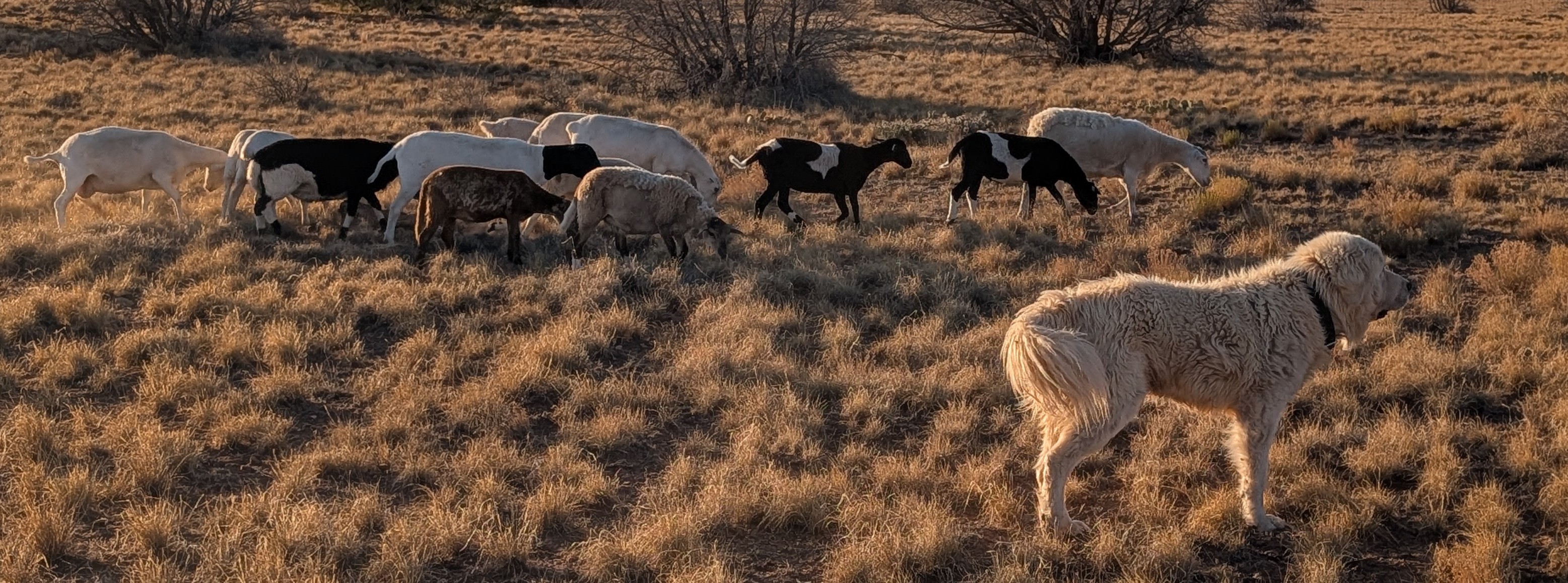St. Croix
They originated in the early 16th century, when Spanish explorers and slave ships brought sheep to the Caribbean islands for food and wool production. There is evidence to suggest that St. Croix sheep have West African and Spanish Churra ancestry. Over time, the sheep on St. Croix evolved to become well-adapted to the island’s harsh conditions, including high temperatures, tropical storms, and limited vegetation.
- Parasite Resistance – They are known for their high resistance to internal parasites, making them a preferred choice for sustainable farming.
- High Quality Meat – Their meat is lean, with a mild flavor, low cholesterol, and no tallow taste, making it highly desirable.
- Milk Production – Ewes produce ample quantities of milk high in butterfat, suitable for cheese production.
- Reproductive Efficiency – Ewes can lamb at 12 months of age and may have two lamb crops per year, with twins being common.
- Easy to Handle – They are docile, calm, and easy to manage, making them ideal for small-scale farmers and beginners.
- Adaptability – St. Croix sheep can thrive in a variety of climates, including hot, humid tropical environments and colder regions where they grow a thick winter coat.
- Land Management – They are excellent foragers and can be used for weed control and pasture management due to their browsing habits.
Dorper
Dorper sheep were developed in the 1940's by South African farmers. The Blackhead Persian sheep, a hardy, fat-tailed desert breed from Arabia, brings to the Dorper its hardiness, thriftiness, adaptability, pigmentation and hair covering. It also brings remarkable fertility, with the ability to breed every eight months and to produce a high number of twins. In addition, the Persians have very valuable skins used in the production of fine leather products. The Dorset Horn rams crossed with Blackhead Persian ewes produced fast growing and heavily muscled lambs yielding very satisfactory economic returns under a variety of environmental conditions. The Dorper ewes from this cross were excellent mothers that could be bred in any season.
- Hardy and Adaptable – Dorper Sheep are highly adaptable and do well in harsh, extensive conditions as well as in more intensive operations.
- Excellent Maternal Qualities – Ewes are excellent mothers and heavy milkers. Lambs are vigorous and have high survivability.
- Long Breeding Season – Dorpers are non-seasonal or have an extended breeding season. They can easily be managed to produce three lamb crops in two years.
- Reproductive Efficiency – Dorpers are very fertile and prolific. Lambing rates of 180% can be achieved per lambing.
- Pre-potency – Dorper sheep cross well with commercial ewes of other breeds and as terminal sires produce fast growing, muscular lambs.
- Non-Selective Grazers – Dorpers are excellent converters of a wide range of forage types and they excel in grazing or weed control operations.
- Heat and Insect Tolerant – Because of their Blackhead Persian origin, Dorpers have natural tolerance to high temperatures and heavy insect populations. They are productive in areas where other breeds barely survive.
Katahdin
Katahdin sheep are a modern American breed of hair sheep developed in the 1950s by Michael Piel in Maine. They are known for their low maintenance, hardiness, and adaptability to various climates and management systems. The breed is primarily raised for meat production and is highly valued for its efficiency and reproductive performance.
- Reproduction – Ewes have high fertility and prolificacy, typically producing twins, with occasional triplets or quadruplets, and can achieve lambing percentages of 200% with proper management.
- Excellent Maternal Qualities – Ewes exhibit a strong, protective mothering instinct, usually lambing without assistance and producing ample milk for their lambs.
- Meat Production – They produce lean, well-muscled carcasses with a mild flavor, suitable for both specialty and conventional markets.
- Size & Weight – Mature ewes typically weigh between 120-160 pounds, while rams range from 180-250 pounds.
- Early Maturity – Both ewes and rams reach puberty early, with ewe lambs capable of breeding at 12-14 months and rams able to breed at 7-8 months.
- Parasite Resistance – Katahdins demonstrate significant resistance to internal and external parasites, requiring less frequent anthelmintic treatment compared to wool sheep.
- Temperament – The breed is generally docile and exhibits a moderate flocking instinct, making them easy to handle.
